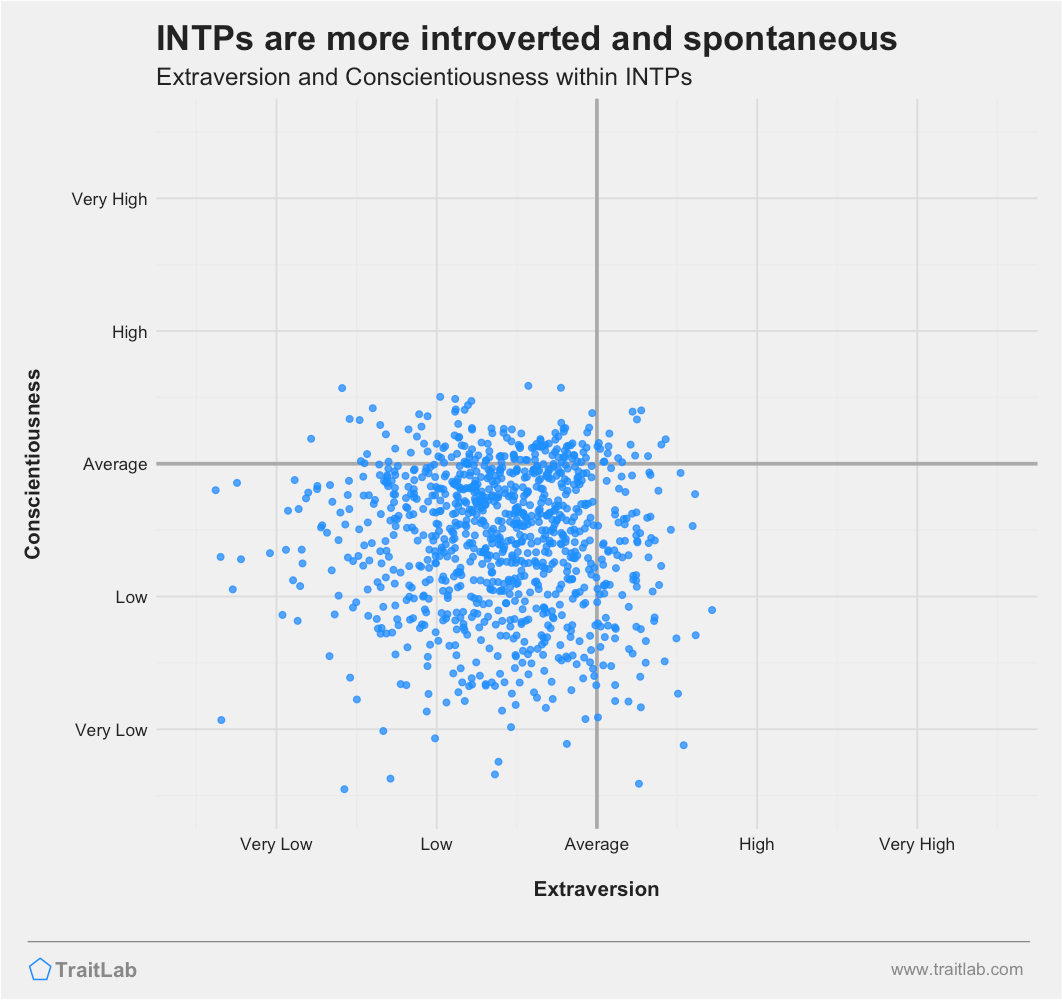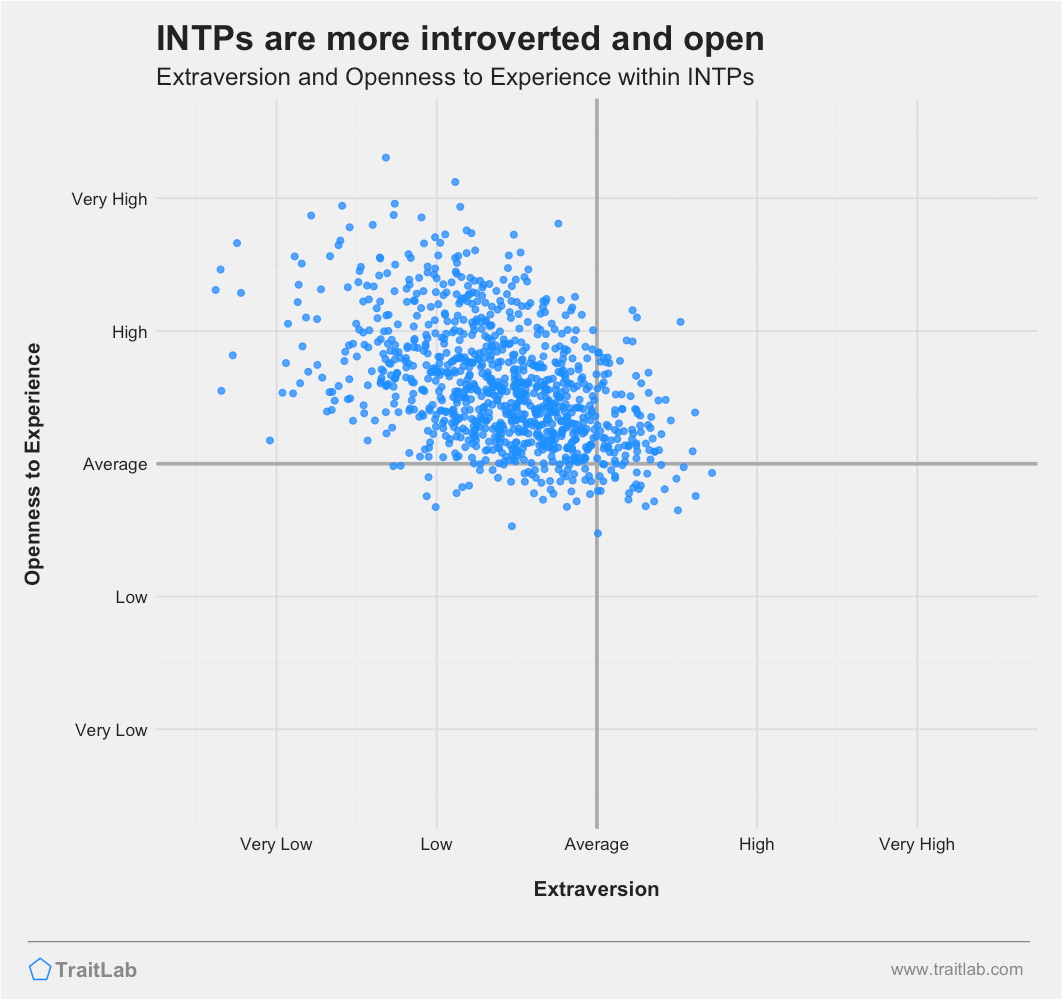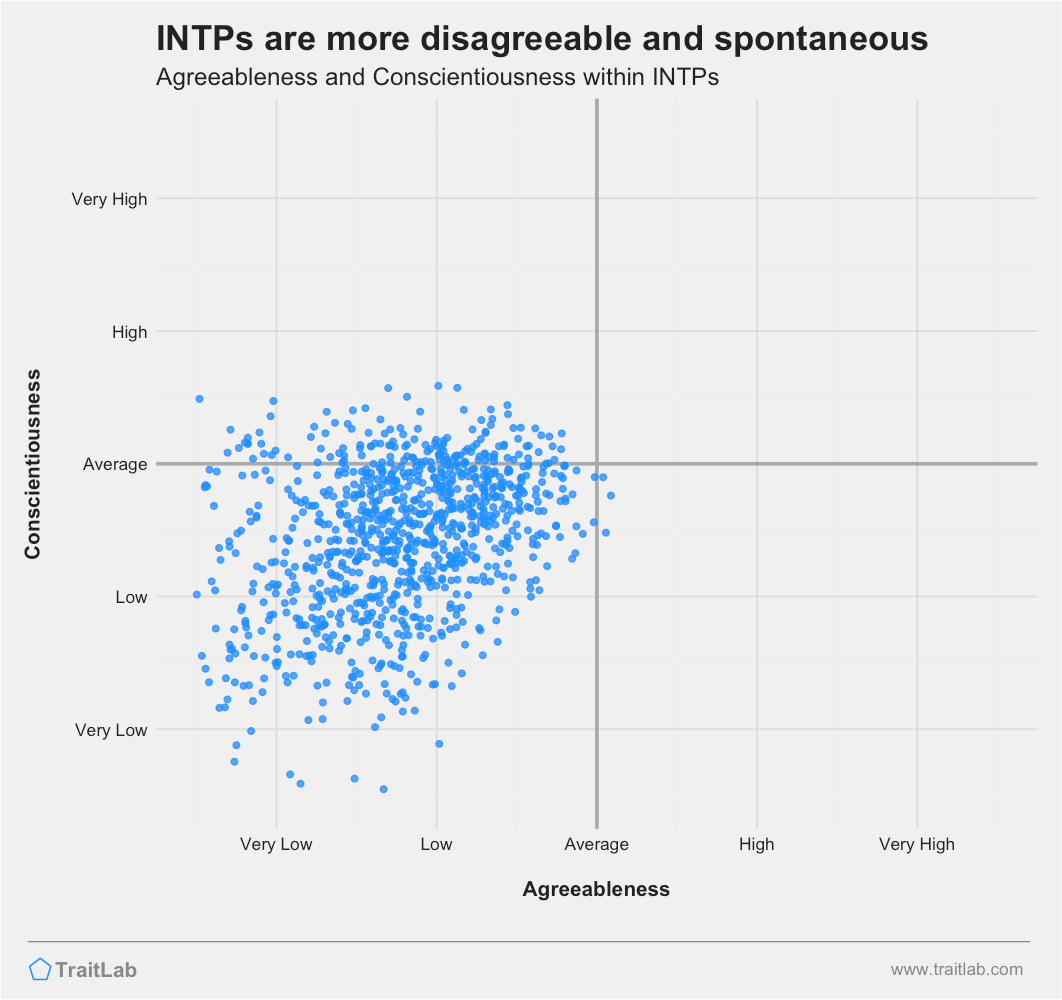See how the INTP's personality dimensions combine to yield several remarkable patterns
Reading time: 5 minutes

Gregory Park, Ph.D.
Author
INTPs tend to have distinct patterns on the Big Five personality traits, and these patterns lead to a few common strengths among INTPs.
There are three notable patterns commonly seen in the INTPs:

Others may have difficulty reading INTPs, who often have a quiet, reserved exterior but a spontaneous, impulsive mind. INTPs usually have a blend of lower Extraversion and lower Conscientiousness, leading them to be more reserved and withdrawn, holding their opinions and thoughts back in most social situations and avoiding the spotlight.
Despite their quiet exterior, they often impulsively make decisions with their gut, rather than careful planning. When possible, they will avoid sticking to a schedule and prefer the freedom to change their plans at the last minute.
INTPs are often genuinely interested in the world around them. However, they are usually much more curious about the world of ideas and information than relationships and other people.

These preferences follow from INTPs’ blend of low Extraversion and high Openness, two dimensions that shape exploration styles. INTPs will happily immerse themselves in new ideas and become fully absorbed in learning everything about them. Yet, they might struggle to find a fraction of that same enthusiasm in most social engagements.
INTPs often score on the lower ends of Agreeableness and Conscientiousness, two dimensions closely related to trust and adherence to social norms.

People who score low on both, like INTPs, tend to be suspicious of others’ motives and have a greater distrust of individuals and institutions.
They may feel an inherent resistance to authority and certain social conventions. Rather than following others and trying to fit in, INTPs have a strong independent streak and prefer to go their own way.
Understanding an individual’s unique strengths requires more than just knowing a personality type or Big Five personality traits. Even among INTPs, every person has their own set of strengths that they use when they are at their best.

What are your true strengths?
Discover your personal strengths and lean into what you do best.
One easy way to learn about your own strengths is with the Strengths profile in TraitLab Plus.